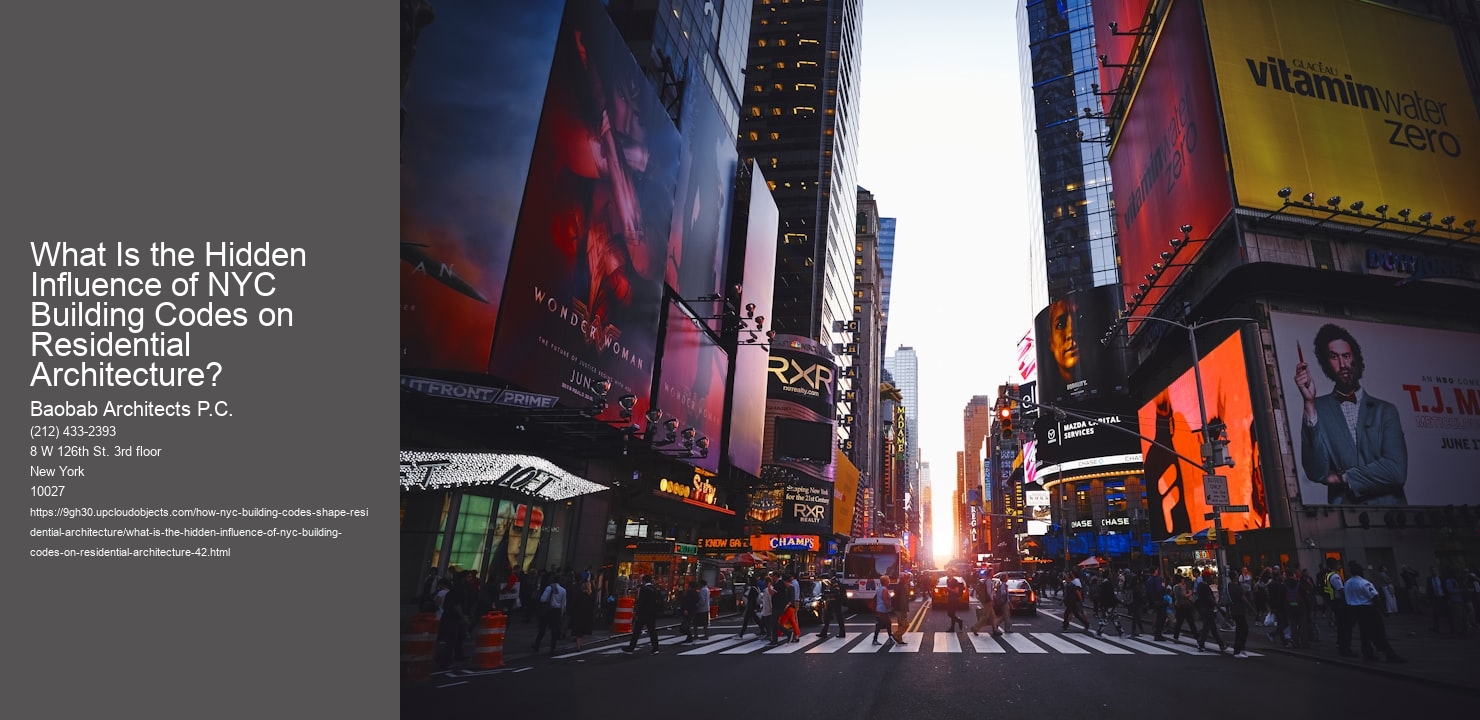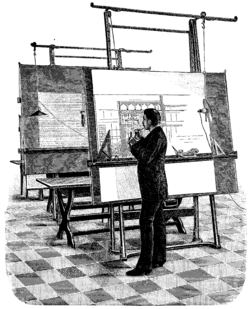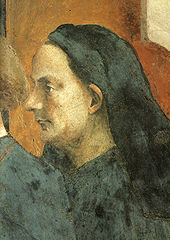Historical Context: Development of NYC Building Codes
The development of New York City building codes is a fascinating trip that supplies understanding right into just how the citys special architectural landscape has been shaped in time. What Is the Hidden Impact of NYC Building Codes on Residential Architecture? . These codes, frequently seen as plain regulations, have actually wielded a surprise yet profound influence on residential architecture, determining the form and function of urban living spaces.
The story starts in the late 19th century with the Tenement Home Act of 1867, the very first significant legal attempt to attend to the awful living conditions in NYCs quickly growing slums. This legislation mandated fundamental sanitary conditions, consisting of the demand for one commode per 20 citizens and emergency exit on buildings. Although basic, it noted the beginning of a governing structure planned to shield public health and safety, accidentally influencing architectural design by presenting components like boosted air flow and natural light.
As the city expanded, so did the intricacy of its building codes. The 1916 Zoning Resolution was a revolutionary development, responding to the urban thickness that intimidated to obstruct sunshine and air flow in the city streets. This legislation presented the principle of "" problems,"" requiring structures to taper as they increased, efficiently bring to life the renowned NYC high-rise building silhouette. Architects accepted this difficulty, causing innovative designs that balanced aesthetic appeal with practical need.
Rapid forward to the mid-20th century, and the introduction of the Several House Regulation in 1929 additional emphasized health and safety, concentrating on fireproofing and accessibility to open areas. This period additionally saw an increasing awareness of the social ramifications of architecture, with building codes beginning to show problems concerning affordability and availability, setting the stage for contemporary residential advancements. High-end townhouse architects NYC
The post-war boom produced new materials and modern technologies, triggering updates to the codes to accommodate innovations like reinforced concrete and steel. The 1968 Building ordinance overhaul noted a considerable modernization effort, standardizing lots of techniques and establishing new criteria for structural honesty and safety and security. These adjustments played a vital duty in shaping the citys residential architecture, allowing for more creative expressions while making certain the safety of its inhabitants.
What Is the Hidden Influence of NYC Building Codes on Residential Architecture? - Award-winning architects NYC
- House architects in New York
- Brownstone architects NYC
- Custom design architecture firms NYC
In recent years, sustainability has actually come to be a main theme in NYC building codes, showing broader ecological issues. The Green Building Legislation of 2005 and succeeding updates have actually mandated power effectiveness requirements, affecting the design and construction of residential buildings to include features like green roofing systems and energy-efficient systems. These codes have not just added to reducing the citys carbon footprint but have also spurred architectural advancement, as designers look for to integrate ecological duty with urban living.
Throughout its history, New york cities building codes have been greater than just a 20
Effect On Design Appearances and Materials
New York City City, a bustling metropolis renowned for its architectural wonders, is a city where the sky line is perpetually advancing. Nevertheless, under the surface area of this ever-changing cityscape lies a complex internet of building codes that substantially affect the design appearances and materials utilized in residential architecture. These regulations, while primarily targeted at making certain safety and security, sustainability, and availability, have a profound and sometimes subtle influence on the aesthetic selections and material choices of architects and designers.
One of the most substantial methods NYC building codes affect design appearances is with zoning regulations. These codes dictate the elevation, mass, and trouble requirements for buildings, which subsequently influence the overall shape and kind of residential structures. As an example, the famous "" wedding-cake"" design of early 20th-century high-rise buildings was substantiated of zoning laws that needed obstacles to permit sunlight to get to the streets below. Today, these regulations continue to form the city's architectural profile, compelling architects to artistically navigate these restraints to produce innovative styles that comply with the regulation while still accomplishing aesthetic charm.
In addition, building codes in NYC required stringent power efficiency and sustainability criteria, which have resulted in a change in the materials utilized in residential construction.
What Is the Hidden Influence of NYC Building Codes on Residential Architecture? - High-end townhouse architects NYC
- Black-owned modern architects NYC
- Bronx residential architects
- Interior architecture firms NYC
Fire safety regulations likewise play an essential duty in determining the materials made use of in NYC residential architecture. Building codes need the use of fireproof materials, which has historically restricted the choice to particular sorts of stone, block, and concrete. While these materials have an ageless appeal, modern-day advancements have actually increased the palette to consist of fire-rated wood and progressed composites, permitting better adaptability in design while maintaining compliance with safety and security criteria. This has actually allowed architects to discover new aesthetic opportunities, blending traditional and contemporary styles in unique ways.
Furthermore, access needs have motivated architects to reconsider the spatial design and design of residential structures. Functions such as larger entrances, ramps, and obtainable courses need to be flawlessly incorporated right into the design, affecting not only the performance but also the aesthetic consistency of a space. This need has driven a pattern in the direction of open floor plans and minimalistic layouts, where simplicity and availability coalesce to create rooms that are both stunning and
Sustainability and Energy Performance Needs
New York City City, a busy city renowned for its renowned skyline and architectural wonders, has actually long been at the center of dynamic urban development. Nonetheless, beneath its towering glass facades and historic brownstones lies a nuanced regulative structure that considerably influences residential architecture: the citys building codes. Central to these codes are sustainability and power effectiveness needs, which play a surprise yet profound duty fit the design and performance of residential structures.
The evolution of New york cities building codes shows a growing commitment to environmental stewardship and power preservation. As issues regarding environment modification and source depletion increase, the citys regulations have significantly prioritized green building techniques. This change is evident in requireds for energy-efficient appliances, boosted insulation, and the integration of renewable energy resources, all aimed at decreasing the carbon impact of residential frameworks.
One of the crucial influences of these sustainability needs is the push for innovative architectural services that mix form with feature. Architects and programmers are currently challenged to develop styles that not only satisfy aesthetic criteria however likewise stick to strict power efficiency standards. This has actually resulted in the consolidation of sophisticated modern technologies such as green roofings, solar panels, and advanced heating and cooling down systems. These components not only improve the power efficiency of buildings but additionally add to the overall health and well-being of citizens by advertising far better indoor air top quality and reducing energy expenses.
Moreover, NYCs building codes urge the use of sustainable products, which has a causal sequence on the construction industry. By focusing on materials with lower environmental influence, such as recycled steel, reclaimed wood, and low-VOC paints, the city promotes a market for environment-friendly products and practices. This focus on sustainability expands beyond individual buildings, influencing neighborhood development patterns and advertising urban densification as a way to reduce sprawl and preserve green spaces.
The covert impact of these codes is additionally noticeable in the means they drive the retrofitting of existing buildings. Most of New york cities residential frameworks are decades, if not centuries, old. The citys energy effectiveness needs incentivize the modernization of these buildings, guaranteeing they fulfill present requirements without endangering their historic character. This not just preserves the architectural heritage of the city yet also improves the livability and energy performance of its housing supply.
Finally, the concealed influence of NYCs building codes on residential architecture is extensive and complex. By installing sustainability and power performance needs into the regulative framework, the city not just addresses pushing environmental worries however additionally fosters development and strength in its residential architecture. As NYC continues to evolve, these codes will certainly play an essential function in shaping a 52
Obstacles and Opportunities for Architects
The sky line of New York City is a testament to human aspiration, creativity, and the power of architectural technology. Yet, behind the iconic shapes and avant-garde designs exists a complex internet of building codes that wield a considerable impact over residential architecture. These codes, often perceived merely as regulative difficulties, carry surprise implications that shape the extremely significance of exactly how architects approach the design and construction of living areas in one of the worlds most dynamic urban landscapes.
At the heart of New york cities building codes is a twin required: guaranteeing security and promoting public well-being. These regulations dictate whatever from structural honesty and fire safety to accessibility and energy performance. For architects, this translates into a balancing act between creative expression and compliance with an in-depth set of standards. On one hand, these codes guarantee that architectural growths contribute positively to the urban setting by securing citizens and advertising sustainable practices. On the various other, they can impose restraints that limit architectural liberty and development.
Among the most considerable methods which NYC building codes affect residential architecture is via zoning regulations. These regulations manage land usage and determine the dimension, form, and objective of buildings. For architects, zoning laws can either provide a canvas of possibility or a labyrinth of constraints. For instance, height constraints and floor location proportions can substantially influence the sky line shape and the thickness of residential jobs. This requires architects to be both strategists and musicians, functioning within these constraints to optimize space and aesthetic appeal.
One more hidden impact of building codes is the drive towards sustainability. NYCs codes have significantly incorporated green building requirements, pressing architects to integrate energy-efficient systems and sustainable materials right into their styles. This not just tests architects to introduce but likewise opens new avenues for creativity in creating ecologically accountable and resource-efficient residential buildings. The adoption of green roof coverings, solar panels, and advanced insulation strategies are a few of the ways architects are redefining urban living in reaction to these codes.
In addition, accessibility standards mandated by building codes have profound ramifications on residential architecture. The requirement for buildings to be obtainable to people with specials needs means architects need to take into consideration the inclusivity of their designs. This can affect every little thing from the design of floor plans to the selection of materials and the consolidation of assistive innovations. While these requirements ensure that residential areas are welcoming to all, they additionally require a thoughtful strategy to design that transcends plain looks.
Finally, the concealed impact of NYC building codes on residential architecture is both an obstacle and an opportunity for architects. While these codes enforce particular constraints, they additionally function as a driver for innovation, pushing architects to think



